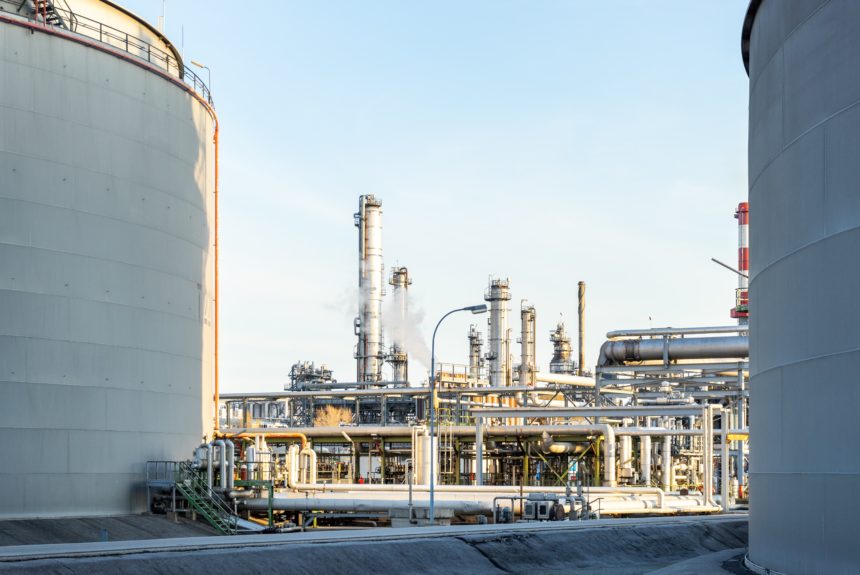Carbon capture technologies are a hot topic on the international environmental stage. While these technologies are already groundbreaking, the invention of direct air capture takes things a step further. Occidental is a perfect case study in how, through direct air capture, a company traditionally associated with fossil fuels is making huge strides in sustainability.
What is direct air capture?
Carbon capture and direct air capture technologies are similar. Both of them work to keep carbon dioxide out of the atmosphere. However, there are a couple of key differences, chiefly the chemical process used, where these technologies are implemented, and how much carbon they remove from the air.
Traditional carbon capture technologies scrub the air to remove carbon, “catching” it directly at the source where it would be released into the atmosphere. In contrast, direct air capture technologies can be placed anywhere and pull in carbon directly from the atmosphere. Direct air capture does not just help reduce current carbon being put into the air – it works to remove carbon previously emitted from the atmosphere.
The International Energy Agency emphasized the importance of direct air capture:
“Direct air capture is one of few technology options available to remove CO2 from the atmosphere. Carbon removal is expected to play a key role in the transition to a net-zero energy system in which the amount of CO2 released into the atmosphere is equivalent to the amount being removed. Because certain sectors such as aviation and heavy industry are difficult to decarbonize, carbon removal technologies can offset these emissions and support a faster transition.”
What has direct air capture’s growth looked like up to this point?
Direct air capture technology has its roots in the 1990s and was being developed while world events like the signing of the Paris Agreement in 2015 placed a global focus on carbon reduction. But it wasn’t until 2017 that the world’s first functional “commercial” direct air capture plant came online in the small suburb of Hinwil, Switzerland. This plant, owned by the Swiss firm Climeworks, partnered with nearby companies like Audi to put a price on carbon, effectively removing carbon from the atmosphere on behalf of these companies reaching for corporate sustainability goals.
The carbon pricing used by this plant in Switzerland is becoming commonplace as countries and corporations alike seek to reduce carbon emissions. In fact, Americans already regularly pay a form of carbon pricing – the gasoline tax.
While the plant opening in Switzerland certainly helped bring attention to direct air capture and carbon pricing alike, 45Q tax credits have been instrumental to the industry’s growth here in the United States. These tax credits were most recently expanded in December of 2020, and serve as a carbon capture incentive by paying up to $50 a metric ton for each ton of carbon directly captured and $35 a metric ton for carbon sequestered through the oil industry..
How is Occidental implementing direct air capture?
Occidental has rolled out a massive direct air capture campaign for its company. They launched a partnership that led to the formation of 1PointFive, a company determined to commercialize industrial-scale direct air capture technologies. 1PointFive believes direct air capture is the single largest infrastructure opportunity available in the 21st Century.
This partnership is being spearheaded through Oxy Low Carbon Ventures (OLCV), the subsidiary of Occidental that focuses on advancing low-carbon technologies and cutting-edge business solutions. OLCV partnered with private equity firm Rusheen Capital Management to launch 1PointFive in August of 2020.
This new company is in a rush to get started. 1PointFive has chosen Worley to conduct the front-end engineering and design (FEED) phase necessary to get a direct air capture facility up and running. When design work and construction is completed and a facility is operational in 2023, it will be the first industrial-scale direct air capture facility in not just the United States, but across the entire globe.
What difference will this make for Occidental?
Having industrial-scale direct air capture online could make a world of difference for Occidental. As a company that has been associated with pollution for decades, being able to add direct air capture to already implemented carbon capture and environmental technologies will allow Occidental to completely rebrand its operations in a sustainable light. Occidental has publicly announced that it wants to be considered a “carbon management company,” and direct air capture will certainly help them achieve this label.
Occidental is also counting on this technology becoming more and more affordable and scalable, allowing the company to reach its goal of becoming completely carbon neutral by 2050. Private investment in direct air capture is in the hundreds of millions which, when coupled with other available funds and tax credits, provides innovative momentum. Some experts believe that affordability will follow in the footsteps of technologies like wind and solar energy – becoming more affordable and widespread as they are deployed. Other researchers have shown that the price of carbon has the potential to fall under $100 a metric ton.
The Direct Air Capture Takeaway
“Carbon” will continue to be one of the world’s hottest environmental buzzwords over the coming decades, and for good reason. Reducing and removing carbon is key in fighting climate change. 1PointFive, Occidental, and the growth of direct air capture technologies prove that this key process can be driven through innovation and the market. For free-market environmentalists, this certainly reads as a victory.
Kelvey Vander Hart is a native Iowan, a member of the American Conservation Coalition, and a communications specialist at Reason Foundation.
The views and opinions expressed are those of the author’s and do not necessarily reflect the official policy or position of C3.
